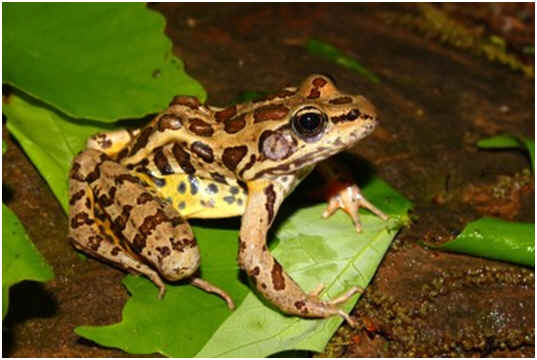
Are Frogs Nocturnal?
Most species of frogs are nocturnal, but many others are diurnal. Over 4,800 distinct frog species live in various habitats, and each species has adapted a sleep pattern that suits its diet and surroundings.
Nocturnal Frogs
Most frog species are nocturnal: they are most active at night. Many different types of frogs are nocturnal, from pond and river frogs that spend most of their lives in water to tree frogs that jump and climb high above the ground. Frogs tend to be nocturnal because the night is the best time for them to catch prey, such as insects and worms. Nocturnal terrestrial frogs are often brown or gray with spotted backs, while nocturnal tree frogs are usually green. These camouflage colors hide them from predators as they sleep during the day. Many nocturnal frogs have loud, distinctive calls to communicate in the dark and across long distances. Some nocturnal frogs will hunt during the day if they are especially hungry. Some well-known types of nocturnal frogs are the leopard frog, Pacman frog, American green tree frog, and red-eyed tree frog.
Diurnal Frogs
Frogs that hunt and breed during the day have developed very different defenses from nocturnal frogs. Many poisonous frogs, such as dart frogs and Mantellas, are diurnal. Instead of camouflaging themselves and hiding, as most nocturnal frogs do, diurnal frogs secrete toxic chemicals that protect them from predators. Most diurnal frogs have colorful skin that makes them stand out from their surroundings: the blue poison frog is blue with black spots, and the golden Mantella is bright orange. These dramatic and beautiful colors warn other animals to beware of diurnal frogs’ poison.
Resources
“San Diego Zoo’s Animal Bytes: Frog & Toad.” Welcome to the San Diego Zoo. N.p., n.d. Web. 6 Nov. 2012. http://www.sandiegozoo.org/animalbytes/t-frog_toad.html
“Amphibians, Amphibian Pictures, Amphibian Facts – National Geographic.” Animals – Animal Pictures – Wild Animal Facts – Nat Geo Wild – National Geographic. N.p., n.d. Web. 6 Nov. 2012. http://animals.nationalgeographic.com/animals/amphibians/
“Frogs and Toads of West Virginia.” Marshall University. N.p., n.d. Web. 5 Nov. 2012. http://www.marshall.edu/herp/ANURANS.HTM